Growing peanuts at home might sound like a whimsical dream reserved for sprawling farms, but I’m here to tell you it’s an achievable and incredibly rewarding project, even in a small garden or container! Forget trekking to the store for a bag of roasted peanuts; imagine the satisfaction of harvesting your own homegrown bounty.
Peanuts, also known as groundnuts, have a rich history, dating back thousands of years to South America. They’ve since spread across the globe, becoming a staple in countless cuisines and cultures. In many societies, peanuts symbolize prosperity and good fortune, and what better way to invite some of that into your life than by cultivating your own peanut patch?
But why bother with the effort? Well, for starters, store-bought peanuts often lack the freshness and flavor of homegrown varieties. Plus, growing peanuts at home is a fantastic way to connect with nature, learn about the plant life cycle, and enjoy a truly unique gardening experience. In this article, I’ll share my favorite DIY tricks and hacks to help you successfully grow peanuts, regardless of your gardening experience. From seed selection to harvesting techniques, I’ll guide you through every step of the process, ensuring you reap a plentiful harvest of delicious, homegrown peanuts. Get ready to dig in and discover the joy of growing your own!
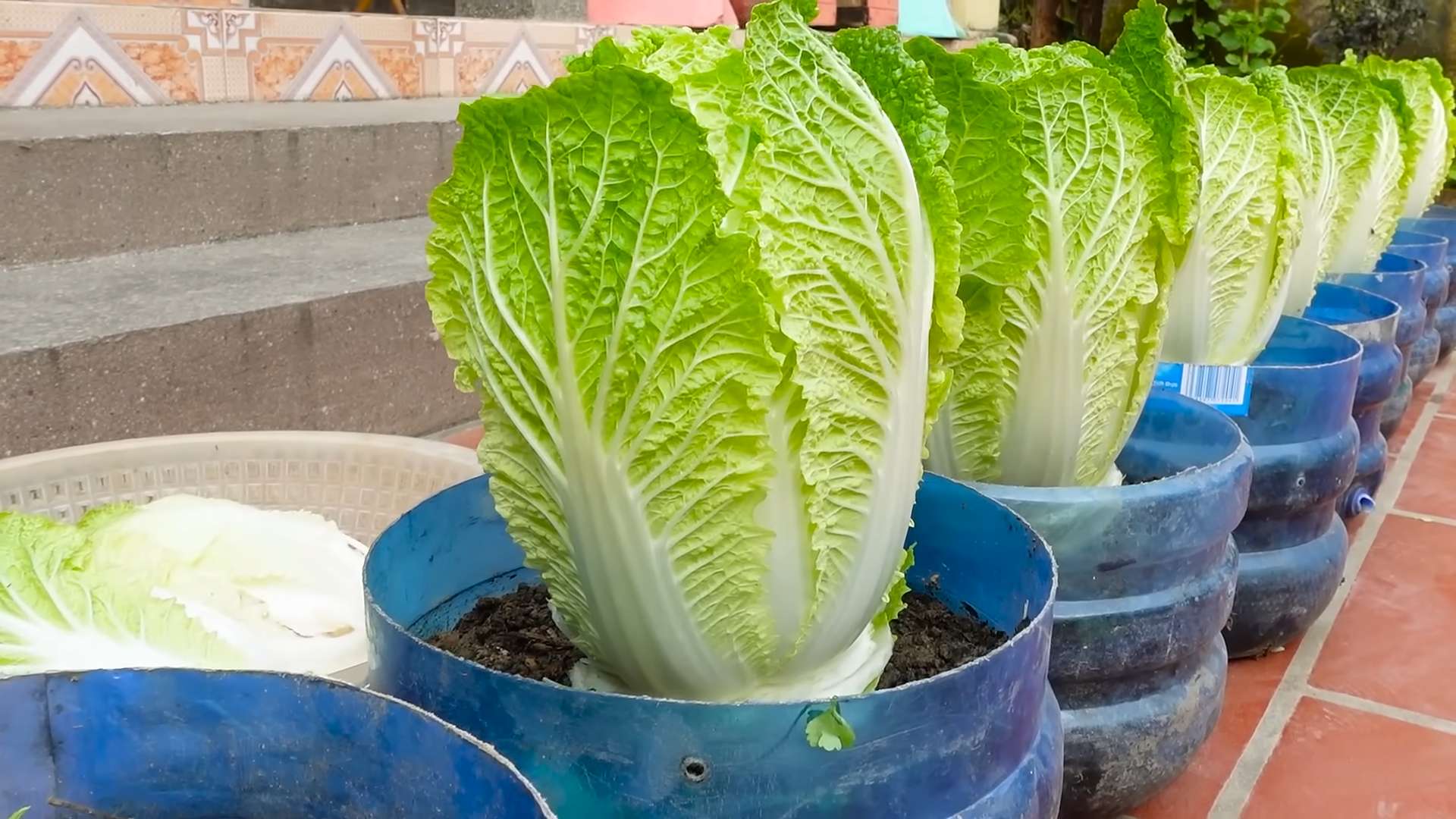
Growing Peanuts at Home: From Seed to Snack!
Okay, peanut lovers, gather ’round! I’m going to walk you through the surprisingly simple process of growing your own peanuts right in your backyard (or even in containers!). Trust me, there’s nothing quite like the taste of freshly harvested, homegrown peanuts. Plus, it’s a super rewarding experience. Let’s get started!
Choosing Your Peanut Variety
Before we dive into the nitty-gritty, let’s talk peanuts! Not all peanuts are created equal, and some varieties are better suited for home gardens than others. Here’s a quick rundown:
* Virginia Peanuts: These are the large, often roasted-in-the-shell peanuts you see at baseball games. They need a longer growing season (120-130 days), so they’re best for warmer climates.
* Spanish Peanuts: These are smaller, reddish-skinned peanuts with a higher oil content. They mature faster (around 100 days) and are more tolerant of cooler temperatures, making them a good choice for shorter growing seasons.
* Runner Peanuts: These are the most commonly grown type in the US and are used for peanut butter. They have a good yield and mature in about 120 days.
* Valencia Peanuts: These are sweet and have three or four kernels per shell. They mature quickly (90-110 days) and are great for boiling.
My Recommendation: If you’re a beginner, I’d suggest starting with Spanish or Valencia peanuts. They’re more forgiving and mature faster, giving you quicker results.
Preparing for Planting
Alright, now that you’ve chosen your peanut variety, let’s get the soil ready! Peanuts are pretty adaptable, but they do have some preferences.
* Sunlight: Peanuts need at least 6-8 hours of direct sunlight per day. So, choose a sunny spot in your garden.
* Soil: Well-drained, sandy loam soil is ideal. Peanuts don’t like heavy clay soil, as it can hinder the development of the “pegs” (more on that later!). If you have clay soil, amend it with plenty of compost and sand to improve drainage.
* pH: Peanuts prefer a slightly acidic soil pH of around 6.0 to 6.5. You can test your soil pH with a home testing kit or send a sample to your local agricultural extension office.
* Fertilizer: Avoid using high-nitrogen fertilizers, as they can promote leafy growth at the expense of peanut production. A fertilizer with a higher phosphorus and potassium content is better. Bone meal is a great natural source of phosphorus.
Step-by-Step Planting Guide
Okay, let’s get those peanuts in the ground!
1. Soaking the Seeds: Before planting, soak your peanut seeds (raw, unsalted peanuts from a reputable source – roasted peanuts won’t sprout!) in water for 2-4 hours. This will help soften the seed coat and speed up germination.
2. Planting Time: Wait until the soil has warmed up to at least 65°F (18°C) before planting. This is usually a couple of weeks after the last frost.
3. Planting Depth and Spacing: Plant the peanuts about 1-2 inches deep and 6-8 inches apart in rows that are 2-3 feet apart.
4. Watering: Water the soil thoroughly after planting. Keep the soil consistently moist, but not waterlogged, until the seedlings emerge.
Caring for Your Peanut Plants
Now that your peanuts are planted, it’s time to give them some TLC!
* Watering: Water regularly, especially during dry spells. Peanuts need about 1 inch of water per week. Avoid overhead watering, as it can promote fungal diseases. Soaker hoses or drip irrigation are ideal.
* Weeding: Keep the area around your peanut plants free of weeds. Weeds compete with peanuts for nutrients and water. Hand-pulling weeds is the best option, as herbicides can damage your peanut plants.
* Hilling: This is a crucial step! About a month after the plants emerge, when they are about 6 inches tall, gently hill the soil around the base of the plants. This helps support the plants and encourages the “pegs” to enter the soil.
* Calcium: Peanuts need calcium to develop properly. If your soil is deficient in calcium, you can add gypsum (calcium sulfate) to the soil.
Understanding the “Pegging” Process
This is where the magic happens! After the peanut plants flower (they’ll have small, yellow, pea-like flowers), they develop “pegs.” These pegs are actually specialized stems that grow downwards from the base of the plant and enter the soil. The peanuts develop at the end of these pegs, underground.
Important Note: Avoid disturbing the soil around the plants during the pegging process. This can damage the pegs and reduce your yield.
Harvesting Your Peanuts
The moment we’ve all been waiting for! Knowing when to harvest your peanuts is key.
* Timing: Peanuts are typically ready to harvest about 120-150 days after planting, depending on the variety. A good indicator is when the leaves start to turn yellow and the plants begin to look a little tired.
* Testing: Dig up a few plants and check the peanuts. The shells should be well-formed and the kernels should be plump and have a distinct peanut flavor.
* Harvesting Method: Use a garden fork or shovel to carefully lift the entire plant out of the ground. Shake off as much soil as possible.
Curing and Storing Your Peanuts
Okay, you’ve harvested your peanuts! Now, it’s time to cure them. Curing is essential for developing the flavor and preventing mold growth.
1. Cleaning: Gently wash the peanuts with water to remove any remaining soil.
2. Curing: Hang the plants upside down in a well-ventilated area for 2-4 weeks. You can also spread the peanuts out on a screen or tarp in a dry, sunny location. Make sure they are protected from rain.
3. Checking for Dryness: The peanuts are properly cured when the shells are dry and brittle and the kernels rattle inside.
4. Storing: Once cured, you can store your peanuts in the shell in a cool, dry place for several months. You can also shell the peanuts and store them in an airtight container in the refrigerator or freezer.
Troubleshooting Common Peanut Problems
Even with the best care, you might encounter some problems. Here are a few common issues and how to deal with them:
* Poor Germination: This could be due to cold soil, poor quality seeds, or overwatering. Make sure the soil is warm enough before planting and use fresh, high-quality seeds. Avoid overwatering.
* Yellowing Leaves: This could be a sign of nutrient deficiency, especially nitrogen. You can apply a balanced fertilizer or side-dress with compost.
* Fungal Diseases: Peanuts are susceptible to fungal diseases, especially in humid conditions. Ensure good air circulation around the plants and avoid overhead watering. You can also use a fungicide if necessary.
* Pests: Common peanut pests include aphids, spider mites, and leafhoppers. You can control these pests with insecticidal soap or neem oil.
Growing Peanuts in Containers
Don’t have a garden? No problem! You can grow peanuts in containers.
* Container Size: Choose a large container, at least 18 inches in diameter and 12 inches deep.
* Potting Mix: Use a well-draining potting mix.
* Planting: Plant 3-4 peanut seeds per container.
* Care: Follow the same care instructions as for growing peanuts in the ground.
* Watering: Container-grown peanuts will need more frequent watering than those grown in the ground.
Enjoying Your Homegrown Peanuts
Congratulations! You’ve successfully grown your own peanuts! Now, it’s time to enjoy the fruits (or rather, nuts) of your labor.
* Roasting: Roast your peanuts in the oven at 350°F (175°C) for 15-20 minutes, or until they are golden brown and fragrant.
* Boiling: Boil your peanuts in salted water for 2-3 hours, or until they are soft and tender.
* Peanut Butter: Make your own homemade peanut butter! Simply grind roasted peanuts in a food processor until smooth. Add a little salt and honey to taste.
* Snacking: Of course, you can also just enjoy your peanuts as a healthy and delicious snack!
Growing peanuts at home is a fun and rewarding experience. With a little bit of planning and care, you can enjoy a bountiful harvest of homegrown peanuts
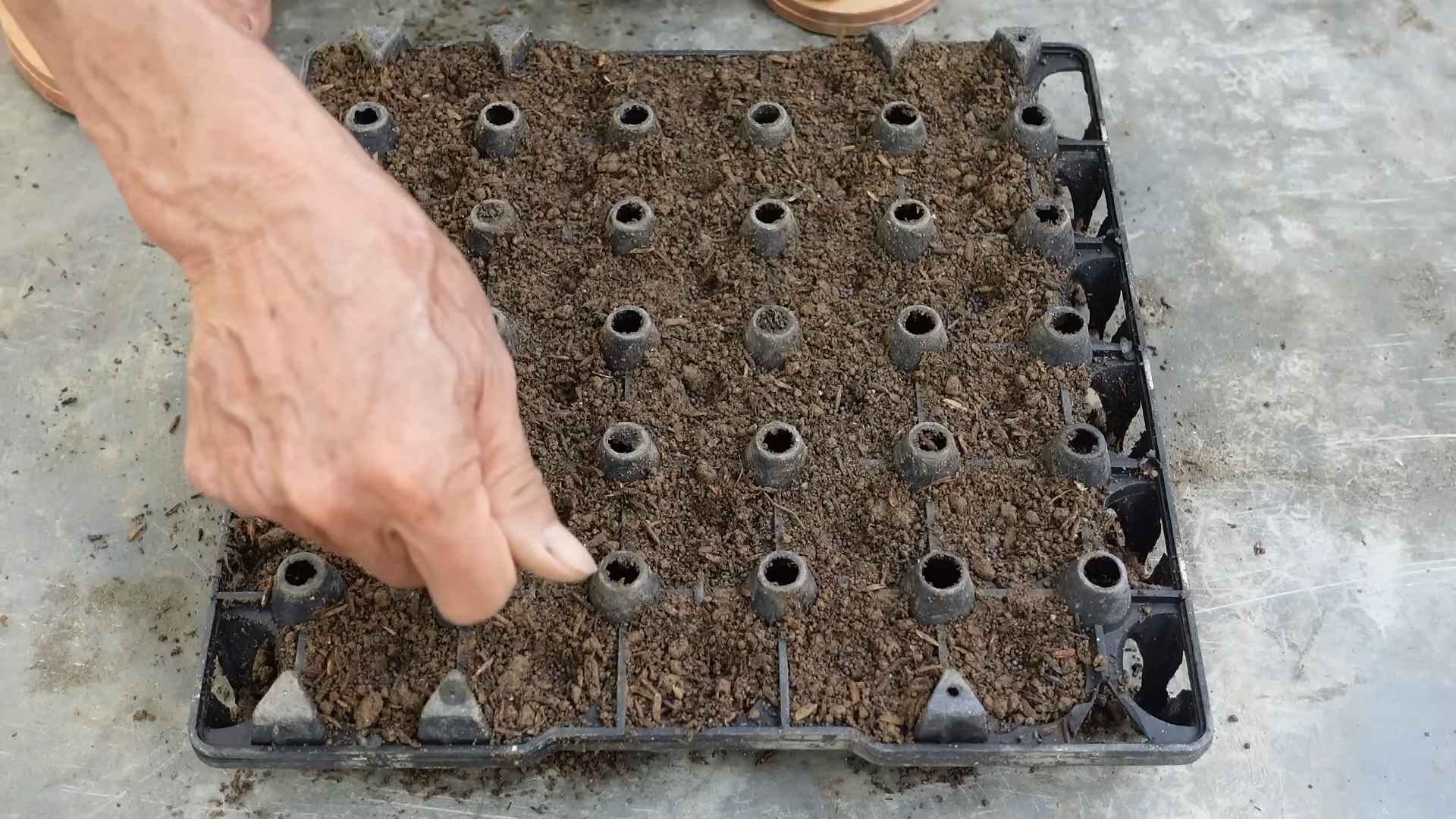
Conclusion
So, there you have it! Growing peanuts at home is not only achievable, but it’s also a deeply rewarding experience. Forget the store-bought, often bland, and sometimes questionably sourced peanuts. Imagine the satisfaction of harvesting your own crop, knowing exactly where they came from and how they were grown. This DIY project transforms your garden into a source of fresh, flavorful, and organically grown snacks.
Why is this a must-try? Because it connects you to your food in a tangible way. It’s a fascinating learning experience for gardeners of all ages, especially children. It teaches patience, observation, and the magic of nature. Plus, the taste of freshly harvested, homegrown peanuts is simply unparalleled. The flavor is richer, the texture is more satisfying, and the overall experience is just…better.
But the benefits don’t stop there. Growing peanuts at home is also a sustainable practice. You’re reducing your carbon footprint by eliminating the need for transportation and packaging associated with store-bought peanuts. You’re also in control of the growing process, ensuring that no harmful pesticides or chemicals are used.
Looking for variations? Consider experimenting with different peanut varieties. Virginia peanuts are known for their large size and are great for roasting. Spanish peanuts have a reddish skin and a sweeter flavor, perfect for peanut butter. Runner peanuts are commonly used in commercial peanut butter production and are a reliable choice for home growing. You can also try growing peanuts in containers if you have limited garden space. Just make sure the container is large enough to accommodate the plant’s root system.
Another fun variation is to experiment with different roasting methods. Try roasting your peanuts in the oven, in a skillet, or even on the grill. Each method will impart a slightly different flavor and texture. You can also add different seasonings to your peanuts before roasting, such as salt, pepper, chili powder, or garlic powder.
Don’t be intimidated by the thought of growing peanuts. It’s a relatively easy process, even for beginner gardeners. With a little bit of planning and care, you can enjoy a bountiful harvest of delicious, homegrown peanuts.
We wholeheartedly encourage you to give this DIY trick a try. It’s a fun, educational, and rewarding experience that will transform the way you think about peanuts. And most importantly, it will provide you with a delicious and healthy snack that you can be proud of.
Once you’ve harvested your first crop, we’d love to hear about your experience! Share your photos, tips, and tricks in the comments below. Let’s build a community of peanut-growing enthusiasts and learn from each other. What variety did you grow? What challenges did you face? What did you learn? Your insights will be invaluable to other gardeners who are just starting out. So, get your hands dirty, plant some peanuts, and enjoy the fruits (or rather, the nuts) of your labor! Let’s all discover the joy of growing peanuts at home.
Frequently Asked Questions (FAQ)
What is the best time of year to plant peanuts?
The ideal time to plant peanuts is in the spring, after the last frost. The soil temperature should be consistently above 65 degrees Fahrenheit (18 degrees Celsius). In most regions, this is typically around late April or early May. Planting too early can result in poor germination and stunted growth.
What kind of soil do peanuts need?
Peanuts thrive in well-drained, sandy loam soil. The soil should be loose and friable to allow the peanut pegs (the stems that develop into peanuts) to easily penetrate the ground. Avoid heavy clay soils, as they can become compacted and hinder peanut development. If you have clay soil, amend it with organic matter such as compost or aged manure to improve drainage and aeration. A slightly acidic soil pH of 6.0 to 6.5 is ideal.
How much sunlight do peanuts need?
Peanuts require at least 6-8 hours of direct sunlight per day. Choose a sunny location in your garden where the plants will receive ample sunlight throughout the growing season. Insufficient sunlight can lead to weak, leggy plants and reduced peanut production.
How often should I water peanuts?
Peanuts need consistent moisture, especially during flowering and pod development. Water deeply and regularly, aiming for about 1 inch of water per week. Avoid overwatering, as this can lead to root rot. Allow the soil to dry slightly between waterings. During periods of drought, you may need to water more frequently.
Do peanuts need fertilizer?
Peanuts are legumes, which means they can fix nitrogen from the air into the soil. However, they still benefit from some fertilization. Before planting, amend the soil with compost or aged manure. You can also apply a balanced fertilizer (e.g., 10-10-10) at planting time. Avoid over-fertilizing, as this can lead to excessive vegetative growth and reduced peanut production.
How long does it take for peanuts to mature?
Peanuts typically take 120-150 days to mature, depending on the variety and growing conditions. You’ll know they’re ready to harvest when the leaves start to turn yellow and the pods feel plump and full. You can also dig up a few plants to check the peanut development.
How do I harvest peanuts?
To harvest peanuts, carefully dig up the entire plant, being careful not to damage the pods. Gently shake off the excess soil and hang the plants upside down in a dry, well-ventilated area for 2-3 weeks to cure. Curing allows the peanuts to dry properly and develop their flavor.
How do I store peanuts?
After curing, you can store peanuts in their shells in a cool, dry place for several months. You can also shell the peanuts and store them in an airtight container in the refrigerator or freezer for longer storage.
Can I grow peanuts in containers?
Yes, you can grow peanuts in containers if you have limited garden space. Choose a large container (at least 18 inches in diameter) with drainage holes. Fill the container with well-draining potting mix and plant the peanut seeds according to the instructions. Water regularly and fertilize as needed.
Are there any common pests or diseases that affect peanuts?
Peanuts can be susceptible to certain pests and diseases, such as aphids, spider mites, and leaf spot. Monitor your plants regularly and take action if you notice any signs of infestation or disease. You can use organic pest control methods, such as insecticidal soap or neem oil, to control pests. To prevent diseases, ensure good air circulation and avoid overwatering.

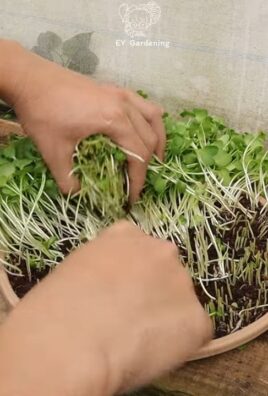
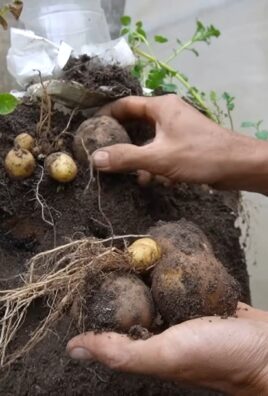
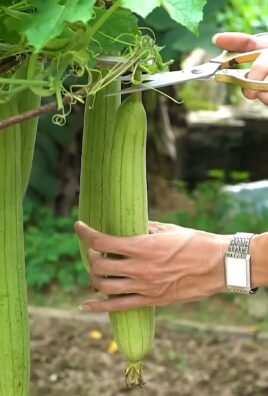
Leave a Comment